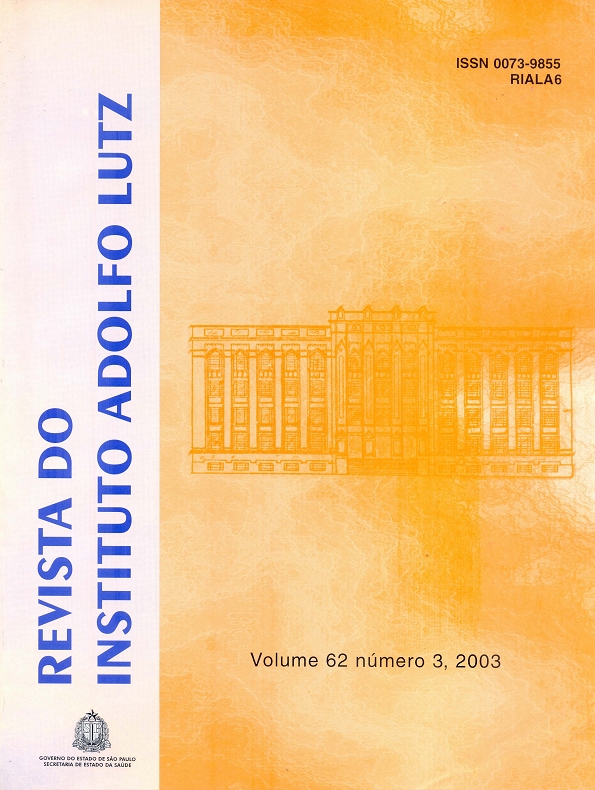Abstract
The laboratory data should be real and reliable because they guide the systems of control of applicable pathogens in the whole chain of production of foods, especially for the one of incidence and considerable severity. Amongst the pathogens of greater interest to the public health, there are the Salmonella spp. which can be present in foods in a small quantity or in a physiological state of stress that makes difficult its isolation. Many research laboratories are studying the validation of analytical methods for its isolation, detection and evaluating the efficiency of the enrichment and selective medium isolation. It was studied the isolation of Salmonella Typhimurium from a mixture containing as well as the competitors/interfering microorganisms: E.coli, P.mirabilis, P.aeruginosa, C.freundii and S.aureus, maintained at (-)18ºC during 30 days with the proposal to validate the same methodology in the isolation of Salmonella from foods. The daily results have shown good recovery of S.Typhimurium in the above mixture and it was shown as well as the possibility of using the control mixture. The recovery, ecometrics, selectivity and productivity tests showed that the conditions of culture and temperatures were adequate. It was observed that the modified Rappaport-Vassiliadis broth presented better performance due the inhibition...
References
1. Andrews, W.A. Methods for recovering injured “classical” enteric pathogenic bacteria (Salmonella, Shigella and Enteropathogenic Escherichia coli) from foods. In: Injured Index and Pathogenic Bacteria: Occurrence and Detection in Foods, Water and Feeds, Florida: Ray, B.,1989. c. 3, p.55-104.
2. Busse, M. Media for Salmonella. Int. J. Food Microbiol. 26(1):117-131,1995.
3. Eley, A.R. Infective bacterial food poisoning. In: Sheffield, U.K., Adrian R. Eley. Microbial Food Poisoning, 2nd edition, 1996. p.15-21.
4. FAO Food and Nutrition Paper. Manual of food quality control 12. Quality assurance in the food control microbiological laboratory. 1991. p.1-8.
5. Floccari, M.E. Métodos de conservacion de cultivos bacterianos. Rev. Arg. Microbiol. 30(1):42-51, 1998.
6. Flowers, R.S. et al. Salmonella. In: Vanderzant, C.; Splittstoesser, D.F.. Compendium of Methods for the Microbiological Examination of Foods, 3rd ed., Washington, D.C., 1992. c. 25, p. 371-422.
7. Harvey, R.W.S.; Price, T.H. A Review Principles of Salmonella Isolation. J. Appl. Bacteriol. 46:27-56, 1979.
8. International Journal of Food Microbiology. Testing Methods for use in Quality Assurance of Culture Media. Appendix(I) 5:291-6, 1987.
9. Jakabi, M. et al. Observações laboratoriais sobre surtos alimentares de Salmonella sp, ocorridos na grande São Paulo, no período de 1994 a 1997. Rev. Inst. Adolfo Lutz 58(1):47-51,1998.
10. Mackey, B.M. Quality control monitoring of liquid selective enrichment media used for isolating salmonellae. Int. J. Food Microbiol. 2:41-8, 1985.
11. Mossel, D.A.A., et al. Quality control of solid culture media: a comparison of the classic and the so-called ecometric technique. J. Appl. Bacteriol. 49:439-454, 1980.
12. Swanson, K.M.J. et al. Colony count methods. In: Vanderzant, C.; Splittstoesser, D.F. Compendium of Methods for the Microbiological Examination of Foods, 3rd ed., Washington, D.C., 1992. c. 4, p.75-95.
13. Varnam, A.H.; Evans, M.G. Foodborne Pathogens. Wolfe Publishing Ltd, c.4, 1991. p.51-85.

This work is licensed under a Creative Commons Attribution 4.0 International License.
Copyright (c) 2003 Revista do Instituto Adolfo Lutz
